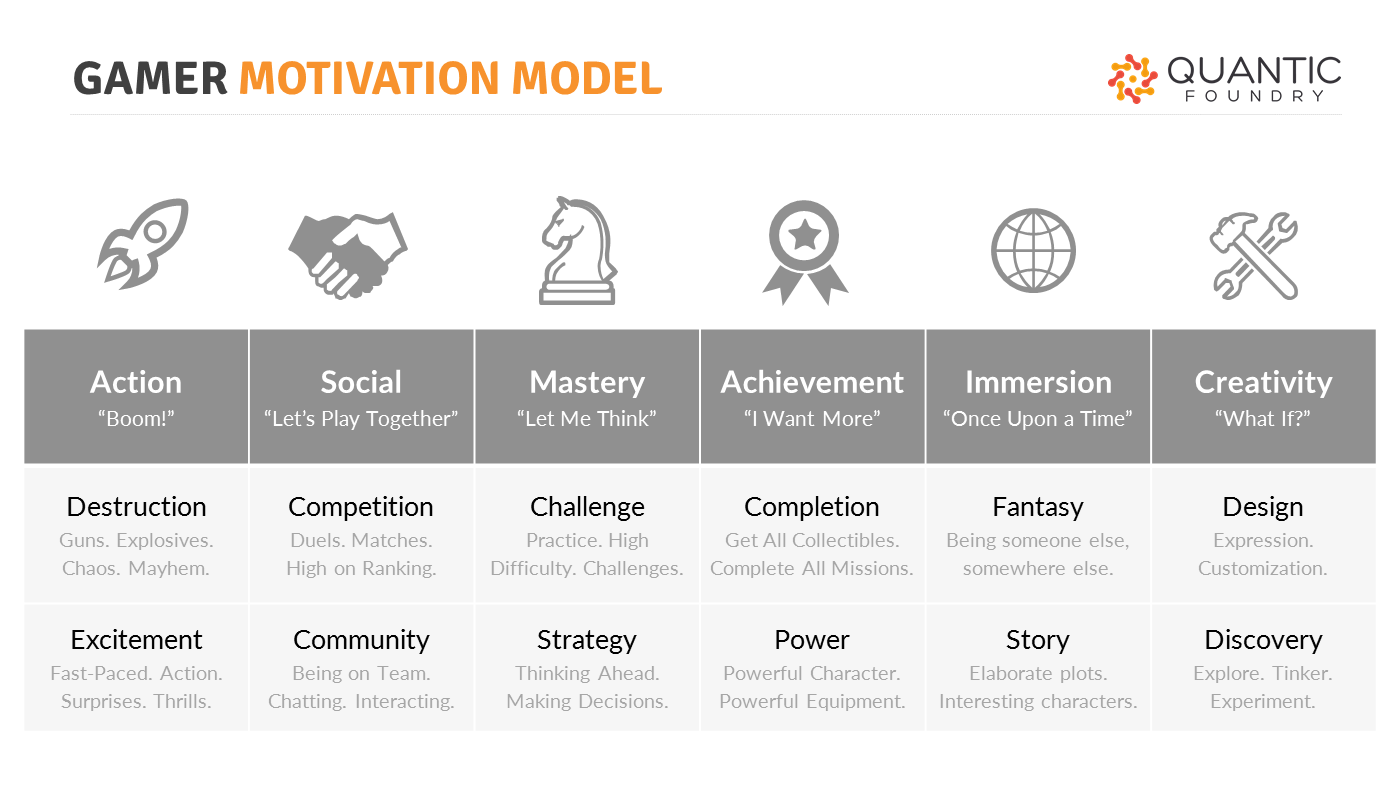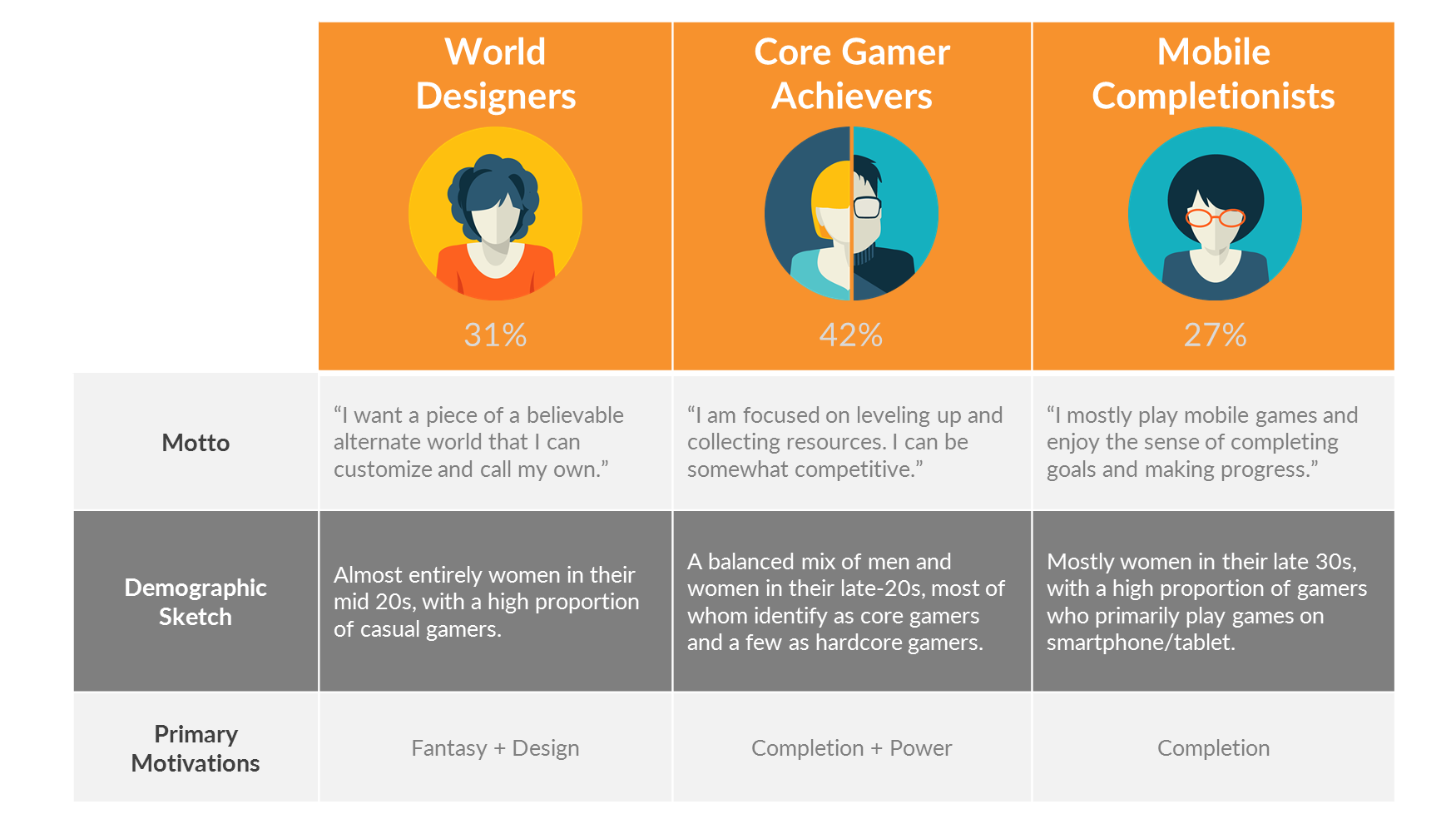Game Design
|
Game Design has always been my main focus - although I had multiple opportunities to expand my knowledge in other disciplines. This is the discipline I felt in love with while joining Supinfogame. My first positions in the industry consisted of designing mini-games and simple gameplays for a casual audience. I joined the AAA industry few years later, and took part in the development of more complex systems and experiences towards core gamers. South Park: The Fractured But Whole was my first opportunity to genuinely own features, and to lead the team to their completion. I have acquired a Senior expertise since, and I continue to enjoy Game Design as much as a decade ago. You will find below few topics I am particularly interested in. |
|
Audience targeting
Defining the audience you want to develop a game for, is a step that is too many times botched in the video game industry. The truth is that developers don't create game for themselves - but for players. Sure, working on a project you are passionate about is a great feeling that everyone should know. However, developers have to define player personas that are likely to enjoy the game, to define their playstyles, and to design the whole experience to meet their expectations:
|
Would players understand your references? |
The players' endorsement and a high retention are the key to sustain a healthy community - especially nowadays where games as a services (GAAS) have become a standard: selling copies isn't an end per se, it's just the first step to win the players' loyalty. However, not every developers can afford a department dedicated full-time to the customer market knowledge. I encourage them to look for alternative solutions to retrieve players data though third parties such as Quantic Foundry:
 |
 |
 |
Systemic Gameplay
The challenge of a systemic gameplay is not to design the mechanics themselves - but the interactions between them. Indeed, a game revolving around individual mechanics with no interactions with each others, is a precarious compilation of features that all feel trivial, dispensable. The more many interactions they have, the more likely the experience feels strong, and unique: each mechanic is a piece of a whole that synergies the gameplay and drives players throughout their journey.
A critical distinction I care to clarify, is that many interactions makes a game "complex" - but not necessarily "complicated". Complex mechanics can be composed of a large amount of very simple interactions that are easy for players to learn and master. At the contrary, complicated mechanics are composed of interactions that are all individual nightmares of rulesets and exceptions challenging the players' sanity.
The more content a game includes, the more simple the interactions must be. The Legend Of Zelda: Breath Of The Wild is a perfect example that revolves around a "chemistry engine" based on 3 simple rules consistently applied throughout the game. Any elements interact with each others in multiple ways that are extremely simple to understand, and that drastically increases the players' Autonomy by encouraging them to experiment all kinds of combinations and approaches. Here an extract of the presentation the developers held at the Game Developers Conference 2017.
Systemic gameplays:
|
There are multiple ways to complete a same objective |
Rational Game Design
Rational Game Design (RGD) is a methodology developed by Ubisoft, and that I had the opportunity to practice multiple times since I joined the company in 2013. It greatly helps breaking down systems and gameplays into player skills to challenge, and atomic parameters to tune - while ruling out obstacles such as the Designers' subjectivity. Rational Game Design provides great tools for Designers:
- To better frame which mechanics appeal to which players
- To improve the variety of game mechanics
- To improve their consistency
- To ensure any pieces of feedback are clear
- To better pace the overall experience - both at micro and macro scales
|
Rational methodologies are highly compatible with Csikszentmihalyi's Theory of the Flow. The latter describes the "flow state" and the required conditions to reach such a level of concentration that an individual unconsciously loses awareness of everything else: time, people, distraction, and even basic bodily needs. The Flow is the optimal level of experience any Designers would like players to enjoy. By using Rational Game Design, we now have the tools to dynamically adapt the challenge they face moment-by-moment to always keep them neither bored nor anxious. I genuinely recommend everyone to investigate this kind of methodologies as I am convinced of its efficiency. |
 |